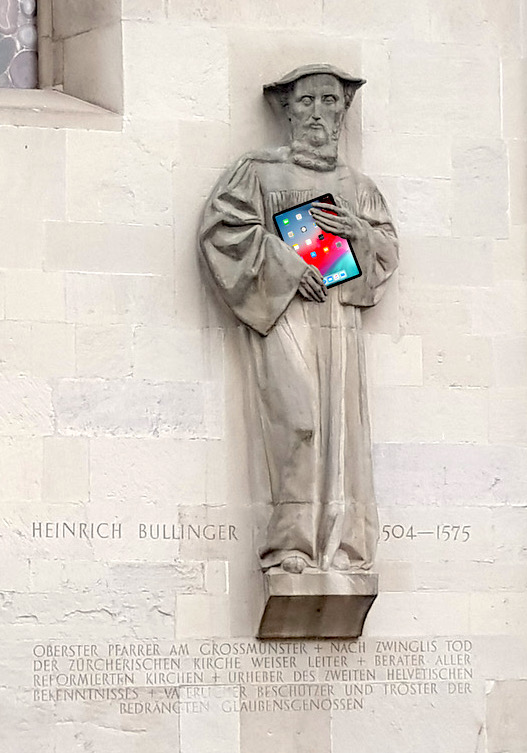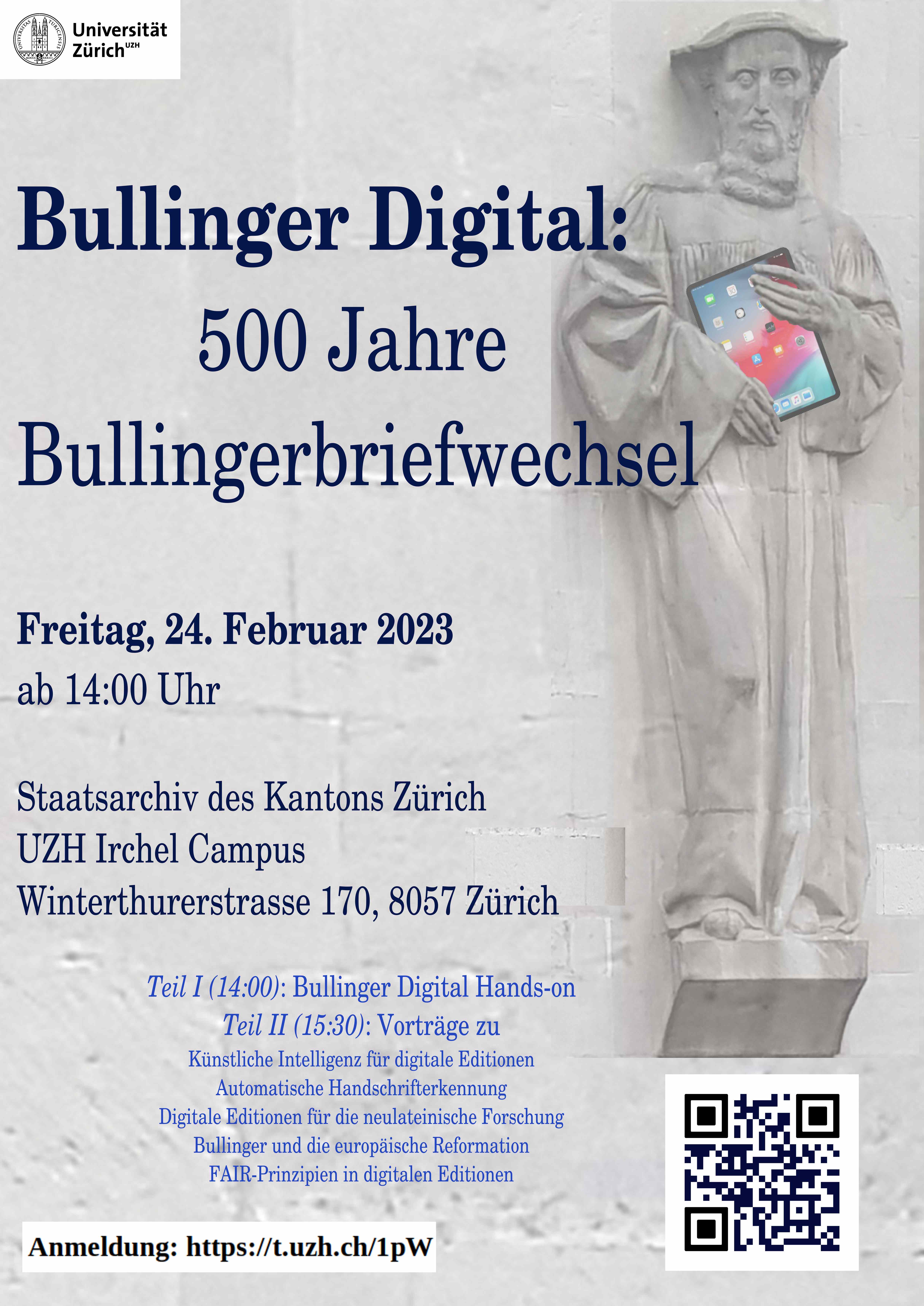Bullinger Digital

Statue of Heinrich Bullinger, illustration
Main entrance Grossmünster, Zurich
Project Overview
The Zurich reformer Heinrich Bullinger (1504–1575) was an associate and successor of Zwingli and an important multiplier of the ideas of the Reformation in Switzerland and Europe. His correspondence network was correspondingly large.
Bullinger evidently recognized the importance of correspondence in his own time. He not only kept the 10’000 or so letters he received, but also made efforts to return the letters he had written. As a result, 2’000 letters that Bullinger once wrote have also been preserved.
Most of the handwritten originals are in the Zurich Staatsarchiv and the Zurich Zentralbibliothek. Some of the letters (1524 to 1547) have already been edited. The aim of our “Bullinger Digital” project is to digitize the remaining letters and make them accessible via the Internet. The first step is to create a database, KoKoS-Bullinger, in which the essential metadata such as sender, recipient, place and letter language are recorded for each letter. Until now, this information was only available on paper.
The grants funded project, which is supported by the UZH Foundation, is being carried out in conjunction with the Department of Computational Linguistics.
